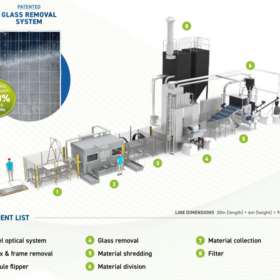The global pursuit of net-zero emissions is accelerating the shift from fossil fuels to cleaner energy carriers, with hydrogen emerging as a linchpin in this transformation. Unlike traditional fuels, hydrogen produces no carbon emissions at the point of use, offering a compelling pathway to decarbonise industries such as steel, chemicals, aviation, and heavy transport sectors, historically resistant to change due to their high energy intensity.
To facilitate this transformation, governments and industries are making significant investments in hydrogen production and infrastructure, aiming to meet the growing demand for this versatile energy carrier. Market estimates suggest that India’s green hydrogen sector is expected to grow to $8 billion by 2030, with the potential to grow to $340 billion by 2050. To capitalise on this potential, the government has pledged to achieve an annual green-hydrogen output of 5 million metric tonnes by 2030.
As hydrogen production scales, a pressing challenge emerges: how do we transport it efficiently and safely over long distances? This is where pipeline infrastructure, once the backbone of the oil and gas economy, must evolve to support the hydrogen economy of the future.
Why pipelines will be critical to the hydrogen economy?
Hydrogen transportation via pipelines offers a scalable, cost-efficient alternative to other modes like trucks or tankers, especially over long distances. Much like natural gas, hydrogen’s distribution through pipelines supports the creation of integrated hydrogen economies that connect production hubs to demand centres.
One of the key advantages is the potential repurposing of existing natural gas pipelines, which could drastically reduce capital investment and accelerate infrastructure deployment.
However, the shift isn’t without challenges. Hydrogen’s low molecular weight and high diffusivity increase the risk of leaks, while its interaction with steel can cause hydrogen embrittlement—a process that degrades pipeline materials, compromising safety and reliability. These complexities necessitate advanced pipeline materials, enhanced safety systems, and thorough engineering redesigns.
Global momentum at the forefront of change
As momentum grows worldwide, countries are rapidly developing hydrogen-specific infrastructure. For example, Europe has already constructed over 1,600 km of hydrogen pipelines and is planning the SoutH2 Corridor—a 3,300 km network through Austria, Germany, and Italy. This corridor is expected to fulfil up to 40% of the EU’s hydrogen demand by 2030 as part of the RePowerEU initiative.
In the Middle East, countries are leveraging their existing energy infrastructure and renewable capacity to target hydrogen exports. The region aims to generate 17.6 million metric tonnes of hydrogen by 2030, establishing itself as a key contender in the international hydrogen market.
India’s pipeline vision for green hydrogen
India’s proactive approach not only supports its domestic goals but also contributes to the broader global hydrogen infrastructure, positioning it as a key player in this emerging market. Through the National Green Hydrogen Mission, the country is developing a nationwide pipeline network that will connect renewable energy-rich regions with key industrial clusters, ensuring efficient delivery of green hydrogen to end-users.
The Petroleum and Natural Gas Regulatory Board (PNGRB) is also working to ensure that India’s existing natural gas pipeline network can accommodate hydrogen transmission. Steel grades such as X52 to X70, which are commonly used in gas pipelines, are being tested for their compatibility with hydrogen.
One of India’s major accomplishments in this domain is the successful testing of domestically manufactured pipes for hydrogen transport. Conducted by RINA Consulting – Centro Sviluppo Materiali S.p.a., these tests confirmed that Indian-made pipes meet rigorous international standards for the safe transportation of hydrogen. This achievement not only underscores India’s growing capabilities in this field but also contributes to the global hydrogen supply chain.
The road ahead
The transition from oil and gas pipelines to hydrogen highways marks a significant transformation in the global energy transport system. The road ahead will demand innovations in materials science, robust safety protocols, and harmonised global standards.
Yet the momentum is undeniable. Governments, private sector players, and multilateral institutions are investing billions to turn hydrogen into a viable energy vector. India’s proactive measures, including its pipeline vision, material innovation, and production targets, position it not just as a regional adopter but as a global contributor to the hydrogen economy.
As India builds its hydrogen highways, it will be critical in linking renewable energy resources to global applications, playing a key role in achieving net-zero emissions worldwide.
The views and opinions expressed in this article are the author’s own, and do not necessarily reflect those held by pv magazine.
This content is protected by copyright and may not be reused. If you want to cooperate with us and would like to reuse some of our content, please contact: editors@pv-magazine.com.








By submitting this form you agree to pv magazine using your data for the purposes of publishing your comment.
Your personal data will only be disclosed or otherwise transmitted to third parties for the purposes of spam filtering or if this is necessary for technical maintenance of the website. Any other transfer to third parties will not take place unless this is justified on the basis of applicable data protection regulations or if pv magazine is legally obliged to do so.
You may revoke this consent at any time with effect for the future, in which case your personal data will be deleted immediately. Otherwise, your data will be deleted if pv magazine has processed your request or the purpose of data storage is fulfilled.
Further information on data privacy can be found in our Data Protection Policy.